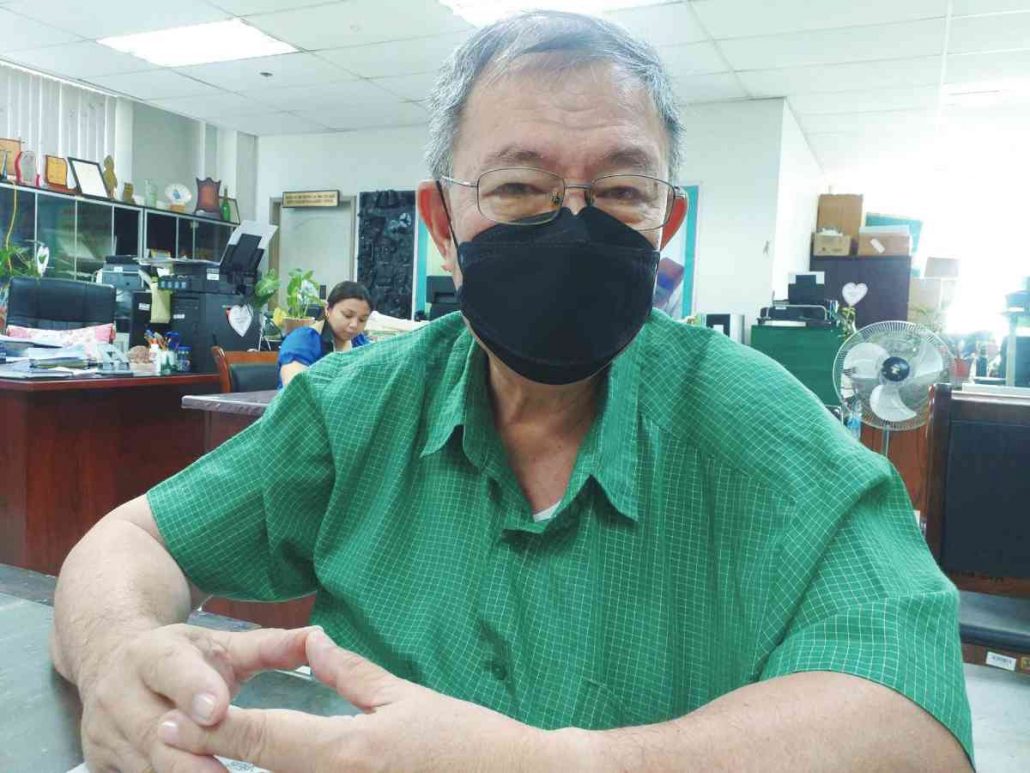
ILOILO – The provincial government is prepared for a major earthquake.
Dr. Jerry Bionat, head of the Iloilo Provincial Disaster Risk Reduction and Management Office (PDRRMO), said the response system and equipment are in place.

He said they are monitoring the West Panay Fault. It stretches more than 90 kilometers, crossing the towns of San Joaquin, Miag-ao, Igbaras, Tubungan, Leon, Alimodian, Janiuay, Lambunao, and Calinog, going to Nabas, Aklan and some portions of Antique province.
“Ini sia litik nga nagahulag, it means nga active sia. Ang parte diri (in Iloilo) asta sa Antique nagahulag sia,” said Bionat in an interview with Panay News on Friday morning.
According to him, evidence of the active fault line is found along the “Seven Cities” located in hinterlands of Alimodian town.
Explained Bionat, the then-perfectly shaped mountains in the “Seven Cities” (seven vegetable-producing barangays) now have significant cracks after recorded quakes in the West Panay Fault.
“Sang una puede pa malakat kay indi mo makita ang litik gawa. Pero subong ginalaktod or lakbang na kay may movement,” he said.
Another evidence of activity in the West Panay Fault are the cracked roads from San Joaquin town to Antique.
“Every now and then may makita ka sa dalan nga guba kay ti nagahulag dira ang duta,” he added.
Bionat also noted the Negros Trench, a long, narrow depression on the seafloor west of Negros island.
On Thursday, Feb. 16, Dr. Renato Solidum, Department of Science and Technology (DOST) secretary and concurrent Philippine Institute of Volcanology and Seismology (Phivolcs) director, urged local government units (LGUs) to prepare for the possible occurrence of the much-dreaded “Big One” following the earthquake in Masbate on Thursday and in Turkey and Syria last week.
He said these were reminders that a strong earthquake can happen in any city, province or region near fault lines, thus, preparation is a must.
HOW DOES THE PROVINCE PREPARE?
Earthquake safety drills were being conducted, especially in elementary and secondary schools in the province, Bionat said.

Teachers, boy and girl scouts, coordinators, social studies teachers, and even student leaders were among those taught to lead during the drill.
The five-sequence command – “drop, cover, hold, clear, and out” – must be remembered in the event of an earthquake.
“Drop” command means to go down on your hands and knees. This protects you from falling but lets you move if you need to. Cover your head and neck (or your entire body if possible) under a sturdy table or desk. If there is no shelter nearby, cover yourself with your arms. Hold on to your shelter or position until the shaking stops. A “clear” command will be given by the disaster commander, followed by “out”, a signal for everyone to exit the building.
The first three commands are implemented by the national government and in other countries.
While the “clear” and “out” commands were Bionat’s initiative to teach the public what to do after the earthquake.
“Karon matinanga lang ang mga tawo kon ano obrahon, that’s why sa national government and other countries three commands lang, but diri sa aton five commands,” he explained.
As of now, he has conducted earthquake safety drills in more than 50 percent of all elementary and secondary schools. The PDRRMO chief targets visiting all schools this year.
Aside from schools, the provincial government and LGUs also held regular quarterly simulation exercises.
Bionat took for example Iloilo provincial capitol employees who were made aware of the emergency exits and designated evacuation areas.
For the rescuers, meanwhile, Bionat said they are specifically trained for all possible disaster situations.
The province is also strengthening its communication and reporting systems for faster assistance requests and responses.
Response vehicles and heavy equipment are also regularly inventoried.
Moreover, the 12 district hospitals and Iloilo Provincial Hospital in Pototan town created a quick response team for such instances.
REMINDERS TO PUBLIC
Bionat reminded the public to be vigilant because disasters are unpredictable.
He said presence of mind and remaining calm would make a difference.
Bionat also advised coordinating with barangay officials early on to determine designated evacuation centers.
The 1948 quake “Lady Caycay” that jolted Panay island was considered one of the strongest earthquakes in the 500-year Philippine earthquake history. It toppled 55 Spanish-era stone churches, including the Jaro belfry./PN



